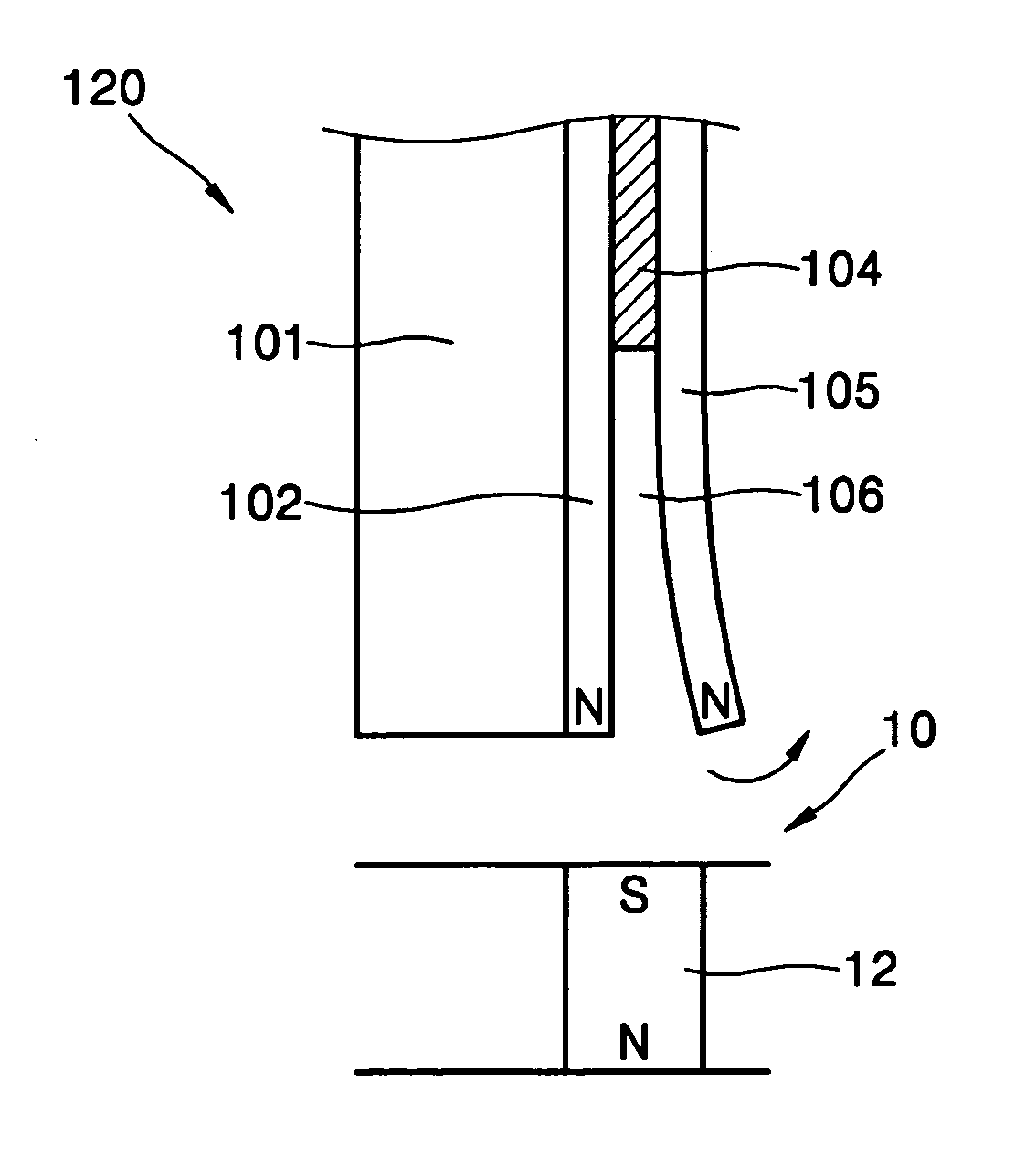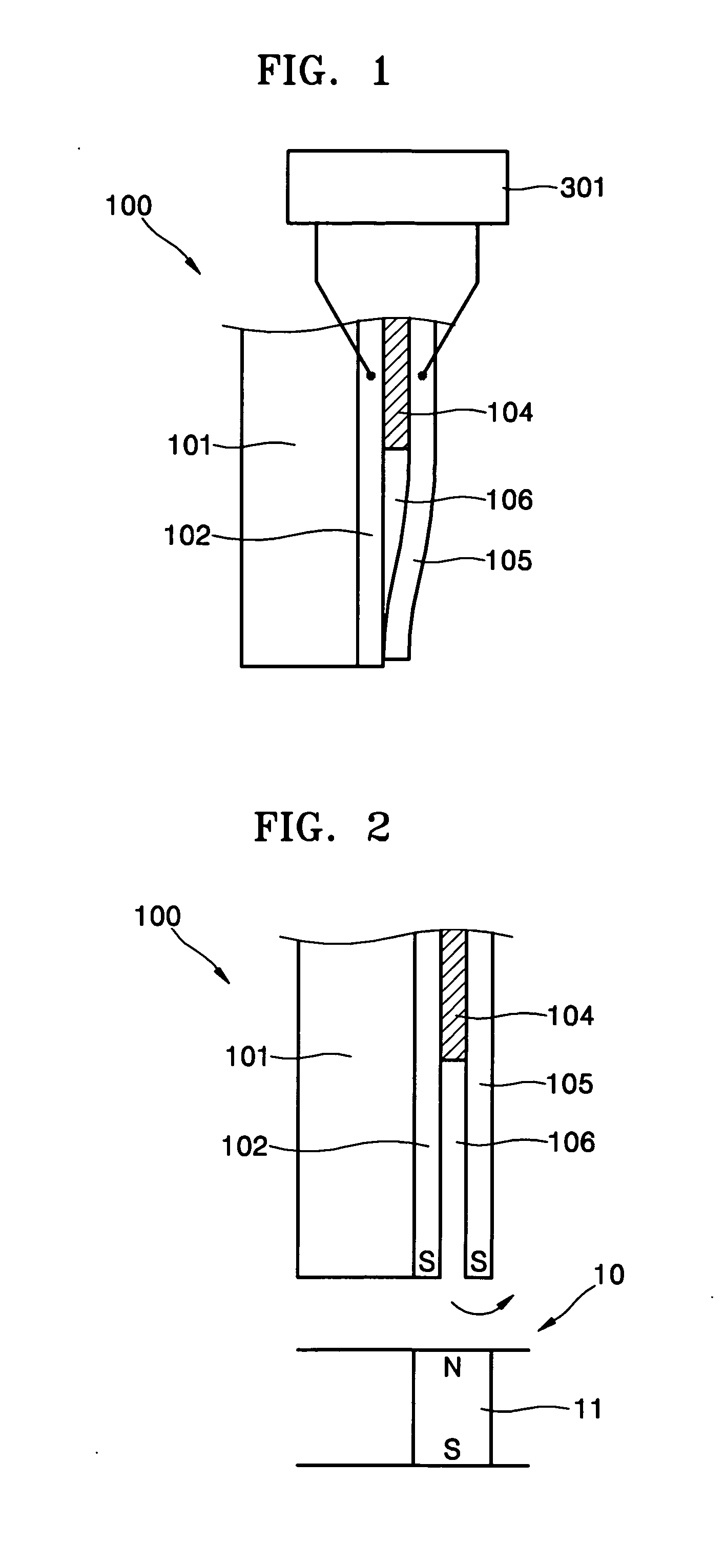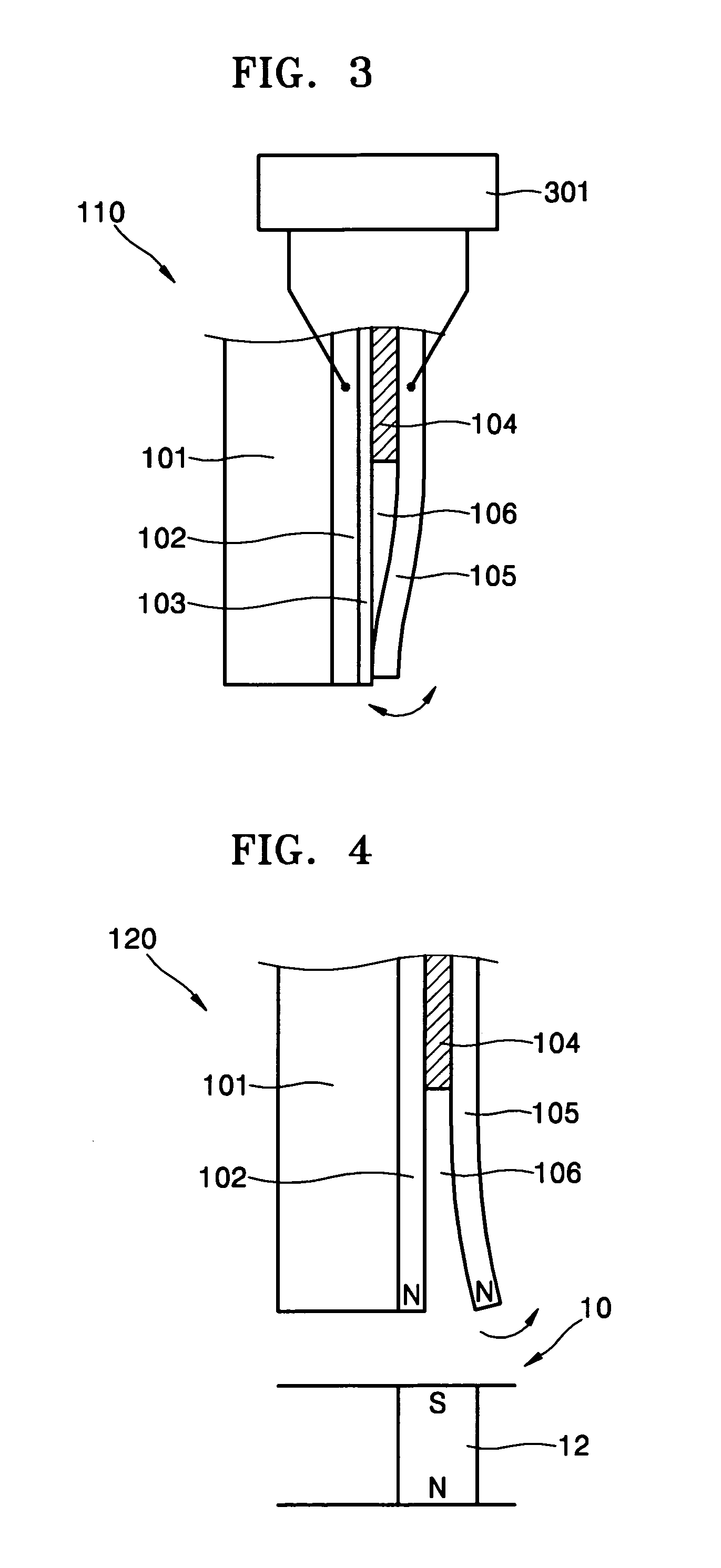Digital magnetoresistance sensor
a digital magnetoresistance and sensor technology, applied in the field of magnetoresistance (mr) sensors, to achieve the effect of high magnetoresistance ratio
- Summary
- Abstract
- Description
- Claims
- Application Information
AI Technical Summary
Benefits of technology
Problems solved by technology
Method used
Image
Examples
first embodiment
[0019]FIGS. 1 and 2 are schematic views illustrating a MR sensor 100 according to the present invention. The MR sensor 100 includes a substrate 101, a first magnetic layer 102 formed on the substrate 101, an insulating layer 104 partially formed on the first magnetic layer 102, and a second magnetic layer 105, wherein the second magnetic layer 105 has a first portion contacting the upper surface of the insulating layer 104 and a second portion extending beyond the insulating layer 104 and bent towards a part of the first magnetic layer 102. That is, the second portion of the second magnetic layer 105 is structured such that the second portion is movable, and therefore can contact or be spaced apart from the first magnetic layer 102.
[0020] The first and second magnetic layers 102 and 105 are mainly composed of soft magnetic material, and may be in the form of a monolayered or multi-layered thin film. That is, the first and second magnetic layers 102 and 105 can be formed as soft magn...
third embodiment
[0029] As illustrated in FIG. 4, when the south pole of a magnetic information area 12 approaches the sensor 120 according to the present invention, the magnetic field of the magnetic information area 12 is applied to the second magnetic layer 105 due to a property of material. So a repulsive force is generated between the first magnetic layer 102 maintaining its magnetization as hard magnetic material and the second magnetic layer 105 so that the second magnetic layer 105 is deformed in a direction away from the first magnetic layer 102. On the contrary, as illustrated in FIG. 5, when the north pole of the magnetic information area 12 approaches the sensor 120, the first magnetic layer 102 maintains its magnetization as the hard magnetic material, and the magnetic field of the magnetic information area 12 is applied to the second magnetic layer 105, exerting an attractive force between the two magnetic layers to mechanically contact each other. In this case, a considerably low resi...
fourth embodiment
[0030]FIGS. 6 through 8 are schematic views illustrating a MR sensor 200 according to the present invention. The sensor 200 includes a substrate 20 and a pair of carbon nano tube resilient members 50, i.e., first and second carbon nano tube resilient members 51 and 52. Each of the pair of carbon nano tube resilient members 50 has at its free end a magnetic member 80. Herein, preferably, a first magnetic member 81 of the first carbon nano tube resilient member 51 is composed of hard magnetic material, and a second magnetic member 82 of the second carbon nano tube resilient member 52 is composed of soft magnetic material.
[0031] Fixed ends of the first and second carbon nano tube resilient members 51 and 52 are preferably fixed to first and second electrodes 21 and 22 of the substrate 20, and the first and second electrodes 21 and 22 are preferably electrically insulated from each other by an insulator 23. The first and second electrodes 21 and 22 are connected to both ends of the resi...
PUM
| Property | Measurement | Unit |
|---|---|---|
| coercive force | aaaaa | aaaaa |
| size | aaaaa | aaaaa |
| diameter | aaaaa | aaaaa |
Abstract
Description
Claims
Application Information
 Login to View More
Login to View More - R&D
- Intellectual Property
- Life Sciences
- Materials
- Tech Scout
- Unparalleled Data Quality
- Higher Quality Content
- 60% Fewer Hallucinations
Browse by: Latest US Patents, China's latest patents, Technical Efficacy Thesaurus, Application Domain, Technology Topic, Popular Technical Reports.
© 2025 PatSnap. All rights reserved.Legal|Privacy policy|Modern Slavery Act Transparency Statement|Sitemap|About US| Contact US: help@patsnap.com



